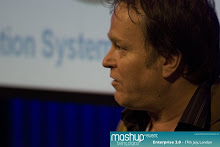I should explain my terminology here. When I refer to Events I mean the information about a business-meaningful event – not the actual real-world experience of the event. Similarly, when I refer to Content, I am also talking about information - in the sense of the ‘content of a book’. So, both Events and Content are categories of information and naturally form part of an Information System, in the broadest sense.
Events: | The real-world proceedings that stimulate business activity – sometimes in a pre-defined sequence but often not. These are the triggers for action. |
Content: | The documents, conversations or messages that are produced and consumed by business activities. These are the dialogues we use to share a plan, a concept, a history and/or the details of a person, place or thing. |
Events (Event Messages) do carry information. However, the information carried has only one purpose: to provide sufficient context to make the Event meaningful to a person or a software component, working on their behalf. It is important to maintain the logical[1] distinction between Event and Content.

Fuzzy and Precise Events:
Events can be regarded as both highly structured and precise and highly unstructured and imprecise messages within a common Event ‘envelope’ (general structure). For example, a movement tracking system may receive highly structured signals from RFID or GPS devices which are then converted into equally structured human-readable business events, But the same system might also receive much more unstructured Event information, possibly capture a ‘text’ message on a mobile phone that might alert of a delay caused by heavy traffic. The emphasis is placed on the value to the human consumer as opposed to, sometimes unhelpful, or misplaced, information engineering rigour. That’s not to say, however, that over time a loosely defined Event may benefit from being made more structured and precise and that some Events need to be implemented as semantically-agreed/syntax-precise data structures from day one.
To illustrate further:
- Fuzzy Events -The Event information may not be as complete or as rigorous as, for example, a structured document or data record might require. However, it might be really useful to know that an Event has taken place even if the information conveyed requires a degree of human interpretation. Maintaining separation between the Event and related Content makes it possible to get value from the Event information without confusing it with the, necessarily precise, business Content information. This is because the Event and the Content have fundamentally different business purposes (as illustrated above). Recognising this difference can be the key to avoiding lengthy data modelling and data standards work (around Identity schemes and other codified data) and thus ensures a degree of business value is delivered as early as possible. The Event may not be interpretable by an IT system – but it may be of use to a person, in the same way a scribbled jotting on Post-it-Note might provide valuable information.
- Precise Events - Paradoxically, the opposite is also true. Content, in the form of a conversation or audio/visual media might be difficult for an IT system to consume and interpret, but is fine for human consumption. In this case, the separation can have the opposite benefit – the Event is always IT ‘friendly’ in the sense it can always be processed in the general sense of routing and subscription, and the Event ‘context information’ may also be processed by rules and derive a new fact or implication.
Aggregated Events become Content over time.
[1] In some circumstances the physical implementation of an Event-based system may include ‘Payload Data’ (Content) bound to the Event. The same logical separation rules, however, apply. The value of this separation identified in MIT’s/AutoID Inc’s original work on the X-internet and EPC standards.




